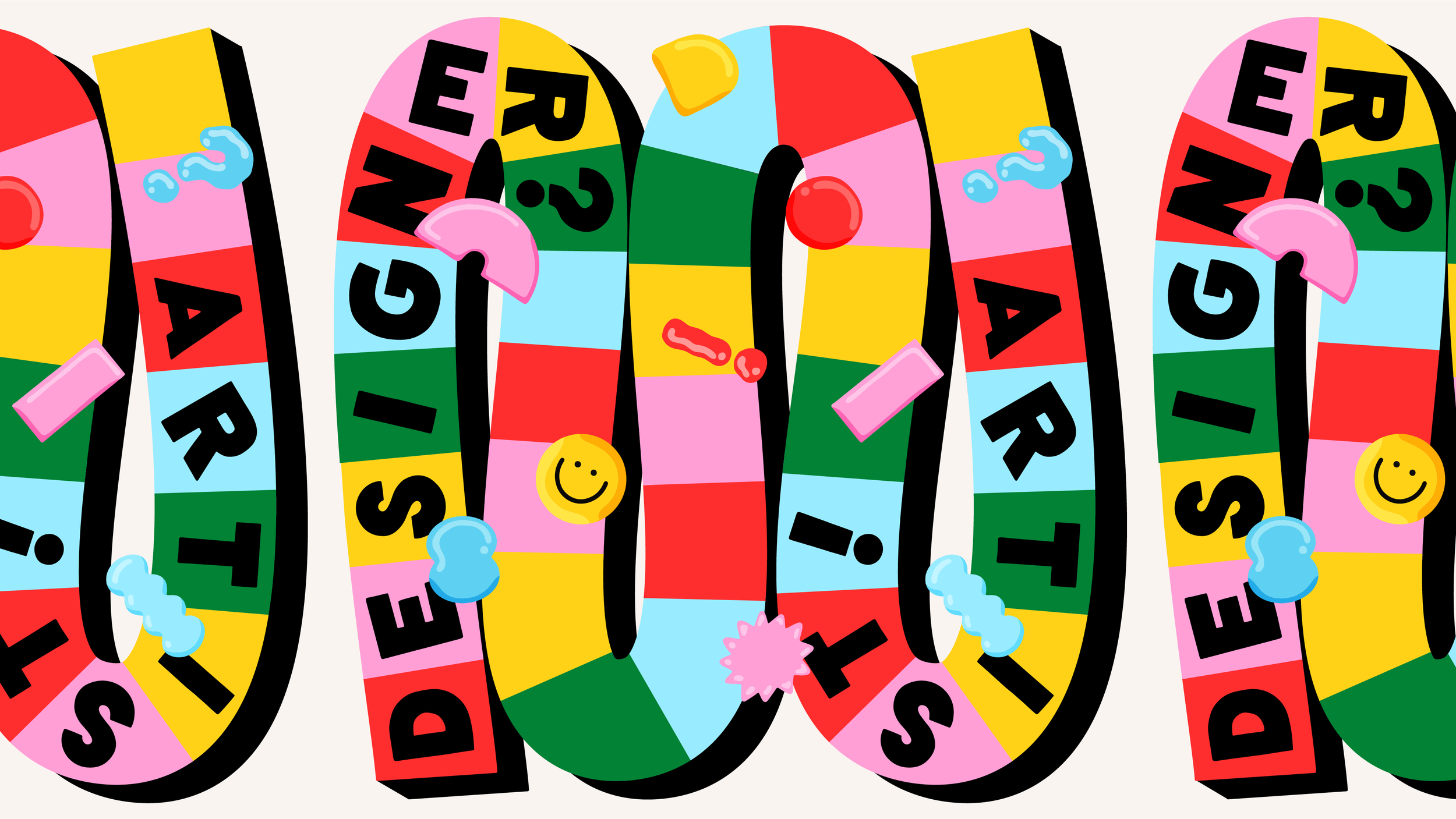The Designer Vs. The Artist
There’s a lot of talk about the difference between artists and designers and as I’ve worked across both sides throughout my hears as a creative, I’ve come up with a distinction that’s quite simple—it’s a spectrum! Your unique brain and personality is the determining factor in deciding where you fall on that spectrum, so let’s dig into it and figure out which you are by first defining the opposing ends of the spectrum:
The designer
Designers are out here solving problems every day and likely need to put their style aside. They use their skills as problem solvers to help the world function better, and they're often more logical and analytical in their approach to projects. Functionality is key for designers, and they may even have to put their own personal taste or style aside in order to better solve a problem.
Say a brand comes to you and says, "Hey! We want you to design our logo and our brand for this new company we started. We sell bongos that look like fruit!" and you say, "Nice! Let me learn about your audience, your competitors, the market, and what’s most functional for your needs. I’ll give you a few options in a range of styles that work best for this and we’ll work together to determine which will get you the highest return! " With this definition of a problem-solving designer, designers have to put their own personal style aside in order to solve the problem for that brand as your own taste may muddle the efficacy of your solution.
If you enjoy solving problems and are able to keep a lovely, nice, big ol’ separation between your persona/taste/style and the solutions you’re creating—being a designer is great for you! I should also mention that these problem-solving designers typically make more money as they are the ones leading meetings and have the trust and responsibility handed to them from the highest positions at the company they are designing for.
The artist
Now for what I consider the fun part, an artist is encouraged to put their whole selves into their work. An artist’s work is often a visual expression of their personality and an outlet for them to express their feelings. Ideally, if you’ve taken my Find Your Style class you’ll know, an artist’s style is something that only they could possibly have, creating work that is exceptionally individualistic. Typically, I’ve found that commercial artists like me (those who are hired to work for-profit by brands) are brought into the conversation once a solution has already been found. Problem-solvers worked ahead of time to determine the best solution to a brand’s problem, found that solution, then found my work as it was the perfect visual application for their solution. This is great because the problem solving has been done, leaving me to “do my thing” with less critique and finagling as everyone knows what style to expect.
If you don’t enjoy solving problems and have a greater call to make things beautiful, working as an artist is likely best for you. Sadly, through my experience, I’ve found the stereotype is somewhat true. Commercial artists generally make less money than their problem-solving designer counterparts as they are less respected by brands. They are treated more as a helpful hand to swoop in and make things pretty rather than someone who is given the responsibility of leading meetings. But there is hope for a bright financial future, art, personality, and creating genuine connection between brands and their community is at an all time high. Brands now more than ever are looking to artists as the face of marketing campaigns and collaborators in a way they haven’t before. And with things like licensing deals and large brand partnerships, artists can potentially earn more than their 9-5 problem-solver buddies—they just gotta work real hard to do it!
Remember, it’s a spectrum
I used to be a 100% problem solving designer and slowly transitioned to work more as an artist. Today I’d say I’m 25% problem solver, 75% artist. I enjoy “doing my thing” (aka working in my style) and getting hired by brands to do me, for them! However, sometimes I love solving a good ol’ problem and enjoy the mental oasis of putting my own taste aside and figuring out the best design solution for a problem.
Never let anyone encourage or discourage you to become one or the other. Ask yourself which is best for your brain and remember that there’s plenty of room for you to customize it so you can work both ways. Your career as a creative is never the same thing forever and we get the privilege of more flexibility than other careers, so enjoy it!

